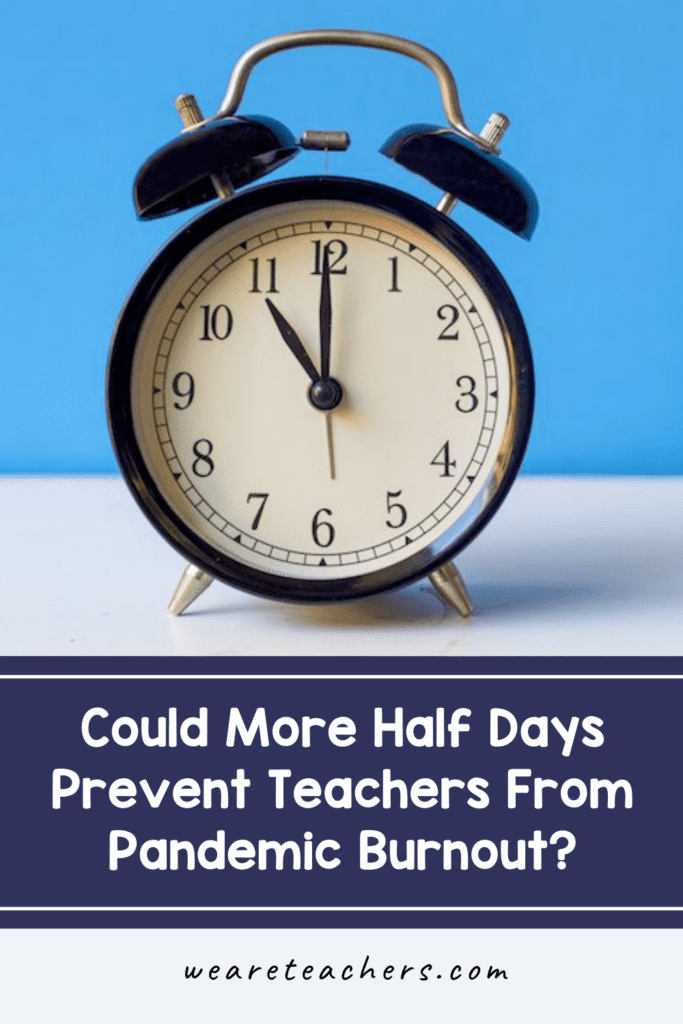In a school year marked by rampant staff shortages and even food shortages in our cafeterias, everyone is exhausted. There’s just no way that this is sustainable. Some school districts have offered incentives to attract new hires with varying levels of success. It’s not enough. Now we’re seeing schools turn to another possible solution: more half days.
Grueling work conditions
We’re in our third year of pandemic teaching, and there’s no denying that this has been the most grueling year so far. All of the issues that existed before COVID-19 persist and have been snowballing into catastrophic problems. No one wants to live (or work) like this anymore.
According to an EdWeek Research Center survey, teacher stress is at an all-time high, with 59 percent admitting that teaching is more stressful than ever before. We’re trying to navigate health and safety measures (or a lack of them), in-class and virtual teaching, and staff shortages, while still dealing with battles over curriculum, testing, and critical race theory. Meanwhile, school shootings are on the rise. It’s all too much.
Benefits of half days
In Maryland’s Wicomico County school district, the system converted seven full days into half days. Chief academic officer, Rick Briggs, explains that this decision was made due to “the stress and the anxiety and the wearing-down of staff like none of us have ever seen before. We want our teachers to be fresh, to be energized, to be in a better spot.”
At least six Maryland school districts have reworked their calendars to include more early-release days, and in neighboring Virginia, Suffolk Public Schools has shortened instructional hours every other Wednesday in an attempt to give everyone a break.
An alternative we are also seeing is that some schools have extended holiday breaks or added in days off in hopes of lessening educator overload. Brianna C. says, “We don’t have any half days, but we get 2 Mondays off a month, and that has done WONDERS!”
Te As L. is on board with the idea, “as long as they are not filled with professional development or meetings (school-wide and grade level).”
Therein lies the key. They need to be true half days off. “Rest is not the opposite of work, it’s a partner,” says Alex Soojung-Kim Pang, the author of the book Rest. Half days would allow teachers to find the space and time to relax and re-energize.
Drawbacks to half days
On the surface, it may initially seem like half days are exactly what we need, but there may be some drawbacks as well.
After a year of virtual learning when schools were shuttered, some parents say their kids need as many in-person hours as they can get. Half days certainly wouldn’t help.
Toni F. says, “I find half days more stressful…” The concept of half days seems to bring an onset of additional planning. How do we possibly fit all the curriculum in?
Some teachers feel that more half days won’t solve the inherent problems. “The problem is that kids don’t know how to behave in school,” Jolene K. says. “Less school isn’t going to fix that, only exacerbate it.”
Ashley S.W. agrees. “We need more admin support, less negative press, more supportive parents, better pay/benefits, less testing, more time to actually teach, funds to purchase supplies, and RESPECT.”
How do you feel about half days? Join the discussion in our Facebook community!

